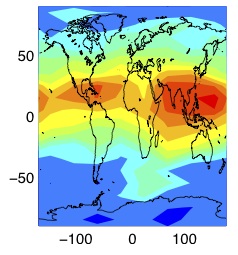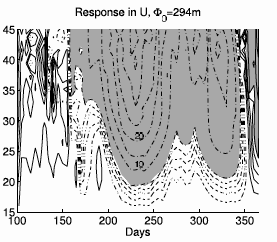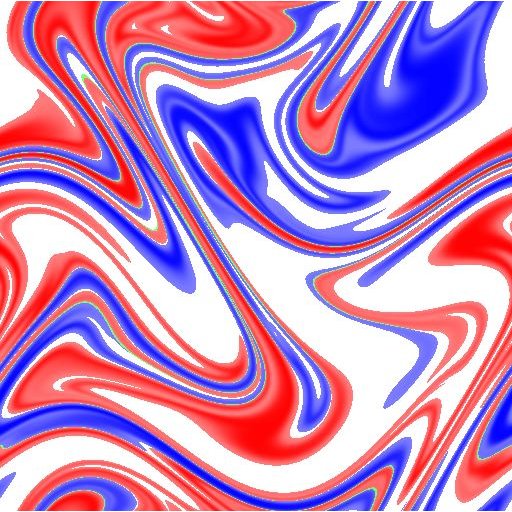Peter Haynes: Research

The Tropical Tropopause Layer
The Tropical Tropopause Layer (TTL) extending from about 14km to 18km in altitude and from about 30S to 30N in latitude is important as a kind of 'gateway' to the stratosphere through which chemical species with sources at the Earth's surface must pass to reach the main part of the stratosphere. The very cold temperatures in the TTL also play an important role in setting concentrations of water vapour in the stratosphere, since air passing from troposphere to stratosphere is 'freeze-dried' by the very cold temperatures in the TTL. All this has implications for climate and for the ozone layer, since in the stratosphere water vapour and other chemical species play an important role in the radiative balance of the atmosphere and in ozone photochemistry. My interest is the role of different physical processes in determining transport pathways and in setting stratospheric water vapour concentrations.
Fueglistaler, S., Haynes, P.H., Forster, P.M., 2011: The annual cycle in lower stratospheric temperatures revisited. Atmos. Chem. Phys., 11, 3701-3711, 2011.
Pisso, I., Haynes, P. H., Law, K. S. 2010: Emission location dependent ozone depletion potentials for very short-lived halogenated species. Atmos. Chem. Phys., 10, 12025-12036.
Liu, Y.-L., Fueglistaler, S., Haynes, P. H., 2010: The advection-condensation paradigm for stratospheric water vapour, J. Geophys. Res., 115, D24307, doi:10.1029/2010JD014352, 2010

Troposphere-Stratosphere coupling
There is much current interest on how changes to the stratosphere might affect the tropospheric circulation, or how prediction of changes to the tropospheric circulation might be limited by poor representation of the stratosphere in models. I have been investigating how dynamical sensitivity of the stratospheric circulation might allow changes imposed in the middle and upper stratosphere to penetrate downwards to the lower stratosphere and troposphere, and also how best to make quantitative predictions of the change in tropospheric circulation resulting from imposed perturbations (to the stratosphere or within the troposphere itself).
Cooper, F. C., Haynes, P. H., 2011: Climate sensitivity via a non-parametric fluctuation-dissipation theorem. J. Atmos. Sci., 68, 937-953.
Hardiman, S. C., and P. H. Haynes, 2008: Dynamical sensitivity of the stratospheric circulation and downward influence of upper level perturbations, J. Geophys. Res., 113, D23103, doi:10.1029/2008JD010168.

Transport, Stirring and Mixing
The transport, stirring and mixing of tracers is relevant to many applications of fluid dynamics and exploits much interesting mathematics. I am interested in some fundamental aspects of transport, stirring and mixing, as well as implications for atmospheric chemistry and oceanic biology.
Tzella, A. and P. H. Haynes, 2009: The role of a delay time in the spatial structure of chaotically advected reactive scalars. Phys. Fluids, 21, 087101 (21 pages).
Tzella, A., and Haynes, P.H., 2007: Small-scale spatial structure in plankton distributions. Biogeosciences 4(2), 173-179.
Haynes, P.H., Vanneste, J., 2005: What controls the decay of passive scalars in smooth flows? Phys. Fluids, 17, 097103.
